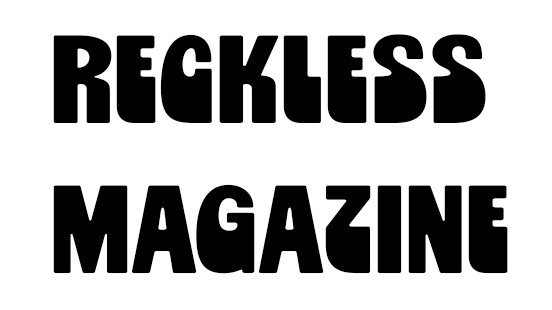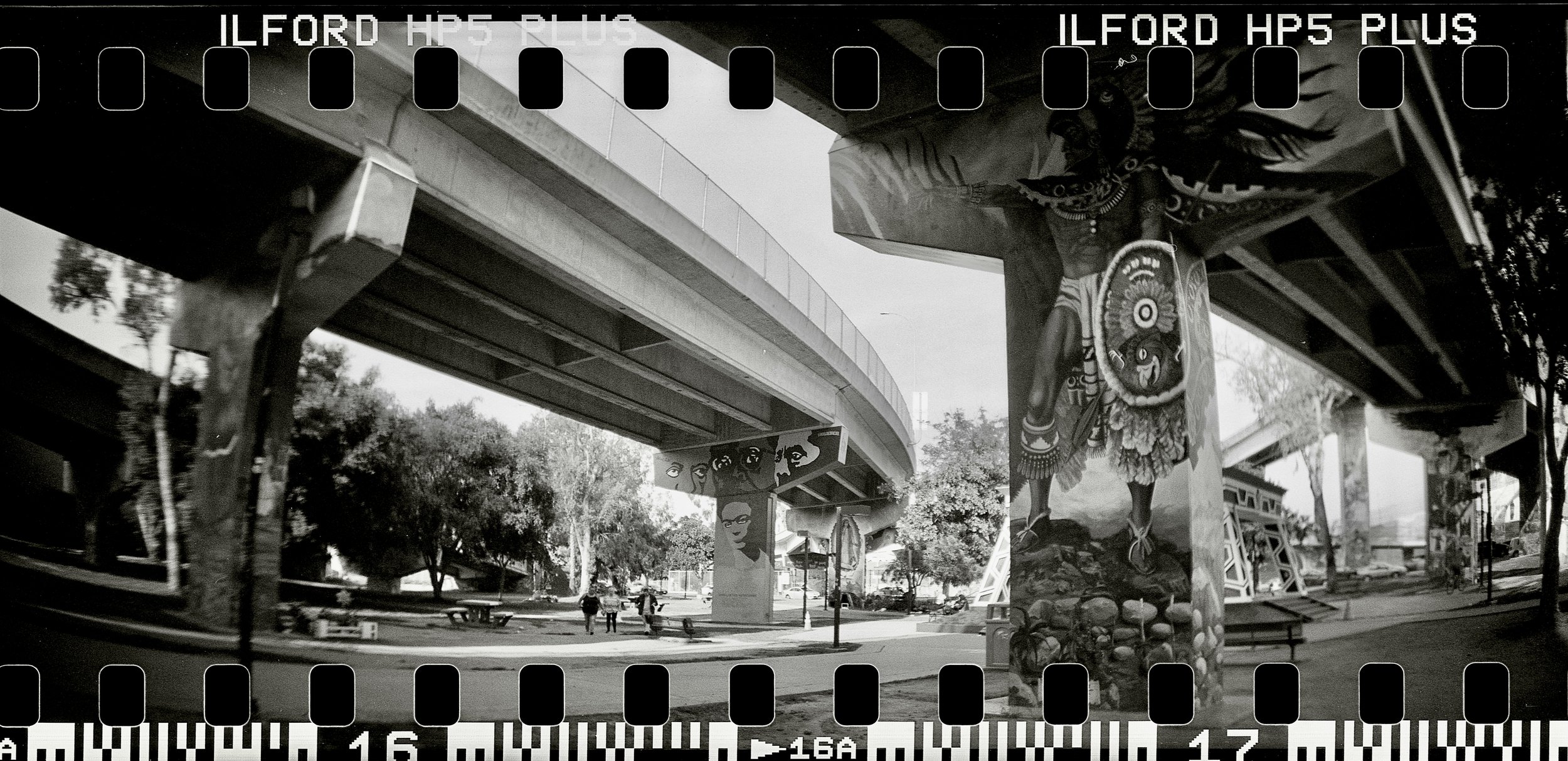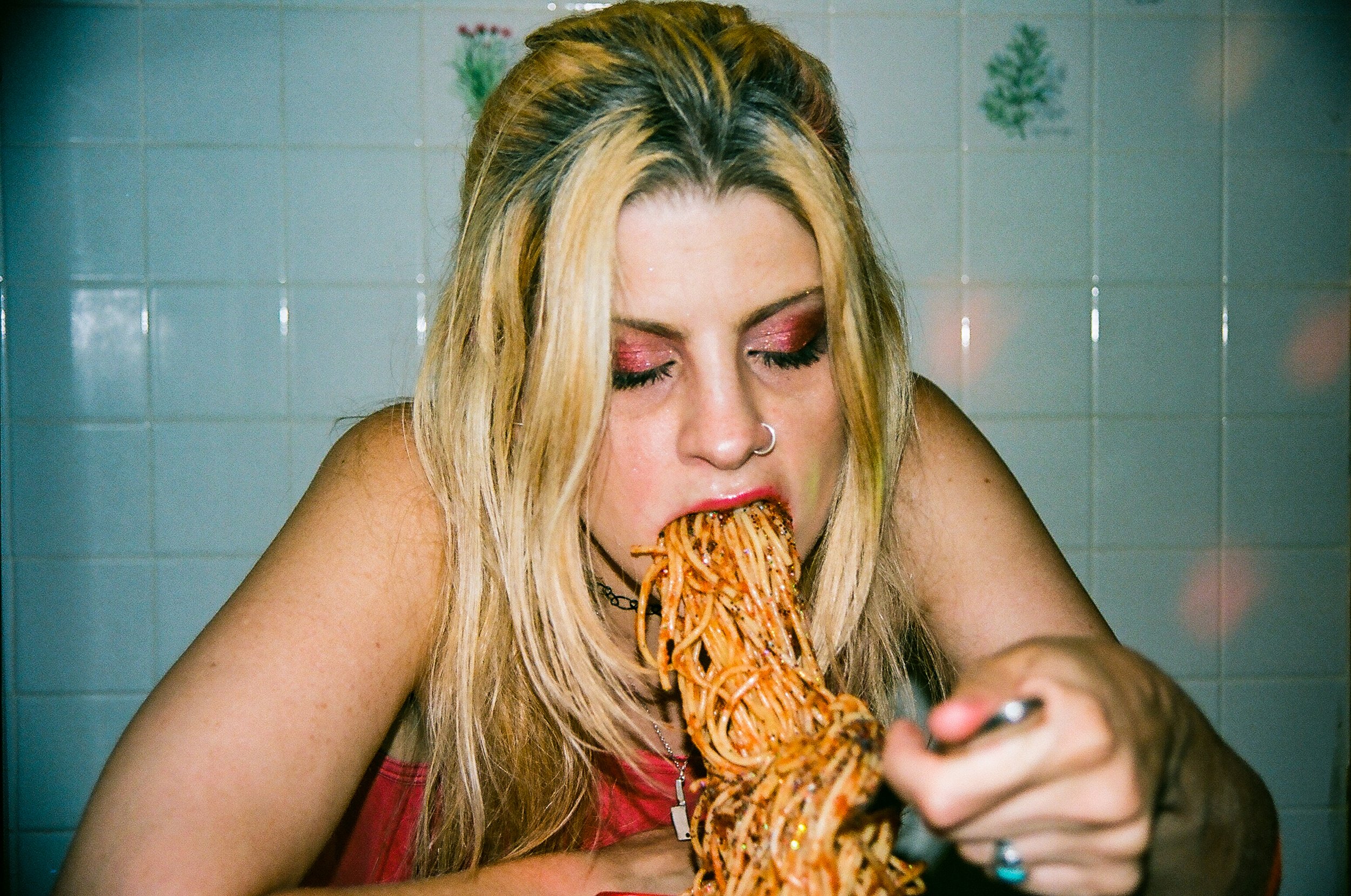Visual Poetry

Bravery, Authenticity, and Mixed Identity
Photography By Fedella Lizeth
Photographer Fedella Lizeth opens up about how being a Queer Italian Latina allows her to accept others, a love affair with San Diego, and making life last a little longer.
San Diego, USA
What is your history as a photographer?
My first intimate experience with a film camera was at a thrift store I grew up going to. It was priced for $40.00 and had a no return policy. I had no idea what I was getting into, but I walked out the store that day with an old, dusty Minolta SRT-SC II. Right after, I had taken it to a camera shop desperately seeking help. The camera guy quickly let me know that the Minolta was covered in battery acid. It was done, dead, no more… just like the 40 bucks I had just dropped on it. That was definitely a learning experience and foreshadowed a lot of what film cameras and film photography are about at this time. These cameras are now old & only get older. They are more expensive, rarer, and more to work with. Luckily, I left that shop that day with a functioning Minolta SRT-SC II, a hole in my savings, and anticipation to enter this whole new world of photography.
I have always had a fascination for taking photos. Whatever camera I could get my hands on, I loved experimenting with these things that could make time stand still and make my life last a little bit longer than that moment. Most importantly, I loved having the ability to document events in my life visually. That miracle in itself was a phenomenon to me and so I began diving into photography starting with that camera I found at my childhood thrift store.
What was your experience like growing up as a Queer Latina? How did you come to terms with this identity?
My parents were both confident in raising my younger siblings & I to be compassionate, to be our authentic selves, and strive for the life we think we deserve. Growing up, I was exposed to a multitude of cultures on top of my own mixed identity whether that was through music, food, art, or community. Because of this dynamic, I felt very comfortable with myself when I started to discover that I was gay. No matter what, I have always dealt with backlash within my personal and social life. This was difficult, because for the first time in my life, when coming out, I felt wrong for who I was. I definitely experienced emotional episodes full of feelings such as anger, confusion, and most importantly grief as I felt I was losing people I cared about most. Fortunately, I have such a loving chosen family who has continued to hold space for me throughout the years. I still deal with these things today, but ultimately I know who I am and the kind of woman I want to be. I am proud of my values as a queer woman of color, and everyday I continue to show myself what I am capable of doing. Ultimately, this confidence guides me to be the best version of myself that I can be inside & out.
How has this influenced your perspective on your photography? Why is it important?
I realized at some point during my coming out process that as long as I remain honest with myself & others, I will be okay. No one ever regretted being brave, only afraid. While it’s still a practice, I try my best to remain unafraid of whatever is to come. So, when it comes to my photo taking process, I am aware of more things than what meets the eye between the individual and myself. It’s important to see the person that I am shooting as someone to understand instead of something to show off. Ultimately, my queerness allows me to hold more space for others because of the lessons I have learned in my own life. Most of the folks that I have photographed within my career are now people I am able to go back to for future projects and vice versa. There is always a unique story to tell in every photo and it has a lot to do with the conversations had behind the camera. It is important to me to build an interpersonal relationship with the people that I make art with.
Tell the story behind one of your favorite photographs
One of my favorite photos that I took has to be the one of my Zio Giacomo, holding his beloved chihuahua, Gizmo, in my mother’s living room during Christmas Eve. My mother’s family comes from Italy, while my father’s family comes from Nicaragua. Both families migrated to the States, leaving me to hold first and second generation presence here in San Diego that is unceded Kumeyaay land. Both cultures have heavily shaped me into the person that I am and more importantly, why my photos maintain the certain essence that it does. My mom’s family soon arrived in a town here that was once known by the community as Woptown, a neighborhood right outside of Little Italy, full of Italian & Mexican immigrants who were working class. It was a melting pot of people that created a very unique community with very similar values especially within the family. Unfortunately, it is now taken over by the tourist industry and because of that many of these families such as mine have been displaced. This photo is one of my favorites because of how representative it is of the way Italians such as my family are like here in San Diego. How rugged and rough we are on the edges, due to the struggles and lifestyle one had to survive in during these times of poverty. Yet, our community has shaped us to be bold and beautiful, no matter how hard we’ve been beaten by the oppressor. When my uncle effortlessly posed there in the living room of our small, Section 8 apartment dressed in his tux, smelling of only the finest cologne, and even made sure Gizmo had his tie on too, I thought to myself that if I took this photo this would be the way that I could show others that there is beauty with our truth. It is important to celebrate ourselves and each other, such as my Zio Giacomo did that evening.
You document the many Chicanx and Latinx lives in San Diego. Why does this inspire you? What have you discovered?
My Nicaraguan culture is one that I am very proud of and a part of that pride is also being present here in San Diego, where there is very little to no representation of Central Americans. However, there is a large Mexican/Chicano population here especially because we are so close to the Tijuana Border. That is where I found a sort of identity and a greater sense of community. As my good friend Jesse Constancio, an elder & leader in the Chicano Park Steering Committee has once told me, being Chicano is a state of mind and a state of heart and with that being said added onto my experiences, Chicanismo is very much a part of my identity.
San Diego houses a very unique diaspora of Latinos. Living in a big city where the military is heavily present, tourism fuels the economy, and the border is only 20 minutes away from Downtown, Chicano history is extremely dense here. There are many windows to look into to learn how Latino culture here is different from other cities along the west coast such as Los Angeles or San Francisco, but there is nothing like San Diego.
Our hoods here are built differently, our people have different battles, our music and pop culture have different roots that all have to do with where we are on this earth. I have always had so much love and adoration for my city, as most people do for their own, but for me it is poetry, the way that everything feels here. That is truly what I try to capture through my photography. It is important to me to showcase the lifestyle of Chicanos in San Diego because not everyone knows about us or how beautiful we are. More importantly, I want to provide a space within my photography that allows my community to resonate with my work rather than see it as a foreign subject, something that they are not a part of or can relate to. We are a different species with a lot of talent and diversity to show off. We are wise and protected because we are resilient and courageous. My duty as a photographer is to show off my people here and ultimately to document our way of life so we as a community can pass on our stories to future generations.
Is there another demographic or group of people you want to document? If so, which group and why?
I want to carry my passion for providing more visibility for the Latino/Chicano community here in San Diego and bring that to other communities of color here and elsewhere. However, I also want to push for others outside of myself to learn about film photography and to hopefully be inspired by my passion for documentation so that they can photograph their communities themselves. I think that people from the actual community would be the best people to present their demographic.
Although, now that I think about it, I would love to find more of a Central American community in the States whether that be here or anywhere else. I know we have a lot of folks present in Los Angeles, Chicago, New York, Miami, and who knows where else. If any of my fellow Central Americans see this and have a story to tell & would like to work together, please reach out to me!
How have you grown and evolved as a photographer since you first started?
My journey as a photographer has been very fruitful for me and I am beyond grateful for the opportunities I have gained such as this one. I only started shooting three years ago, and now at the age of 21, I have had my work published in books, including Bob Dominguez’s, La Tierra Mia, where I became very close to Bob as a work partner and friend, as well as had many of my pieces showcased in galleries, networked with people in the social justice and art community that I looked up to, have provided services for community organizations here in San Diego, and continue to work with monumental artists and photographers as I continue to grow. I never knew that what I would love doing would have impacted my life this much, but now that I have seen what my photography can do for others, I made it my mission to continue to do what I can for people through my lens.
What’s next for you?
I have been working very hard lately to prioritize my photography and to invest in myself. I realized that this part of my life is one that I want to build on so that hopefully it can become a greater part. At some point, I really started to question what I am offering that makes me different from other photographers. I realized that ultimately what I see is not what everybody else sees, and with such a supportive family & audience, I know as long as I let my heart lead my lens, good things will come.
I am letting the year 2021 blossom for me like a flower. Ironically, the tumultuous year 2020 has granted me a lot of milestones and I am ready for next steps. I hope to publish my first book of works very soon, as well as have a solo show here in San Diego. In the long run, I want to provide more aid to my community in any way that I can with my camera, and to teach youth and others to pick up a camera and document, because as mentioned before, my eyes see differently than others, and that is the same for everyone. We all have stories to tell.
Thank you, Rick, for seeking me for an interview. I truly appreciate this opportunity and hope to do more work with you in the future. And thank you to everyone who has read and learned a little bit about me!





